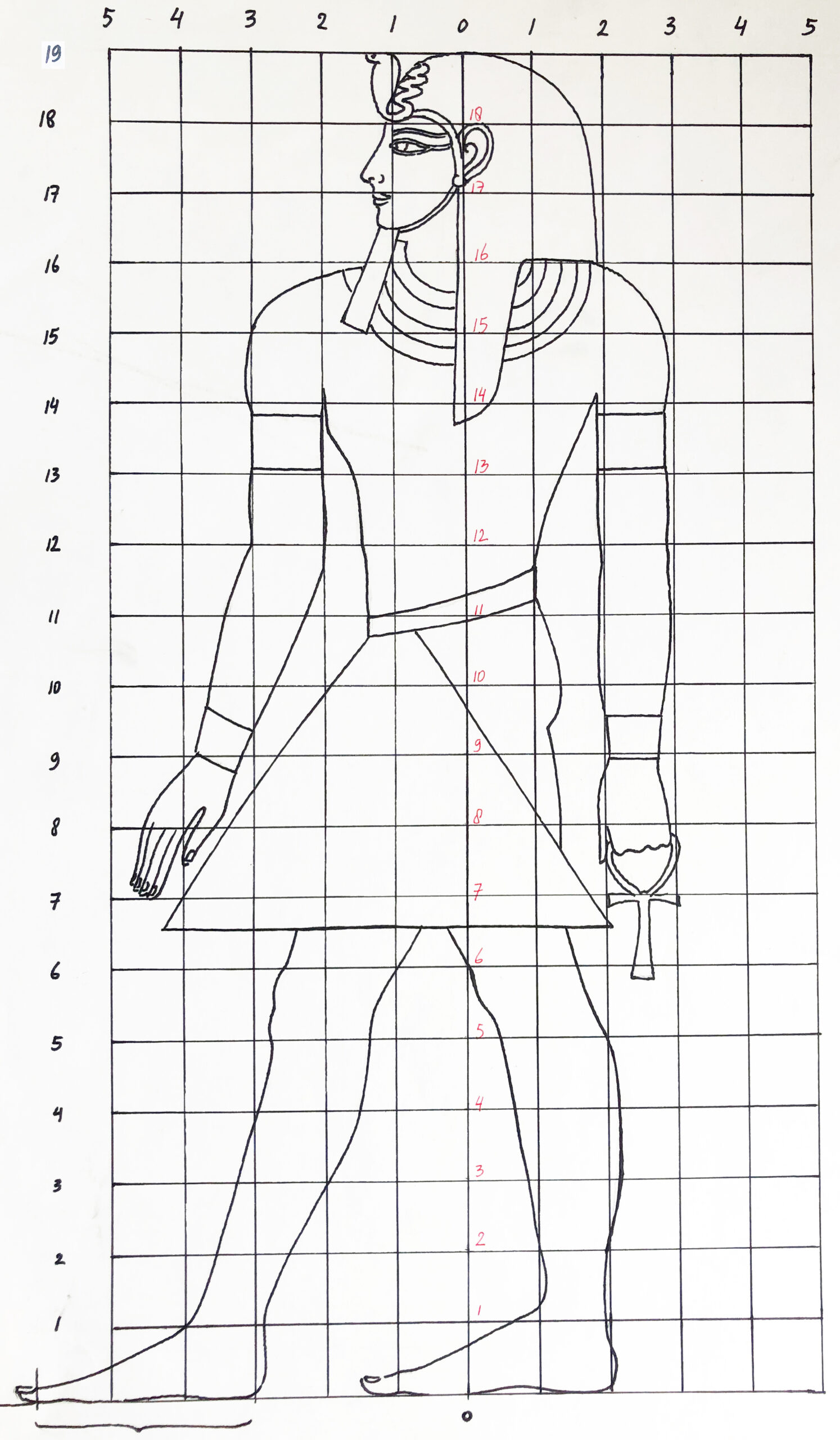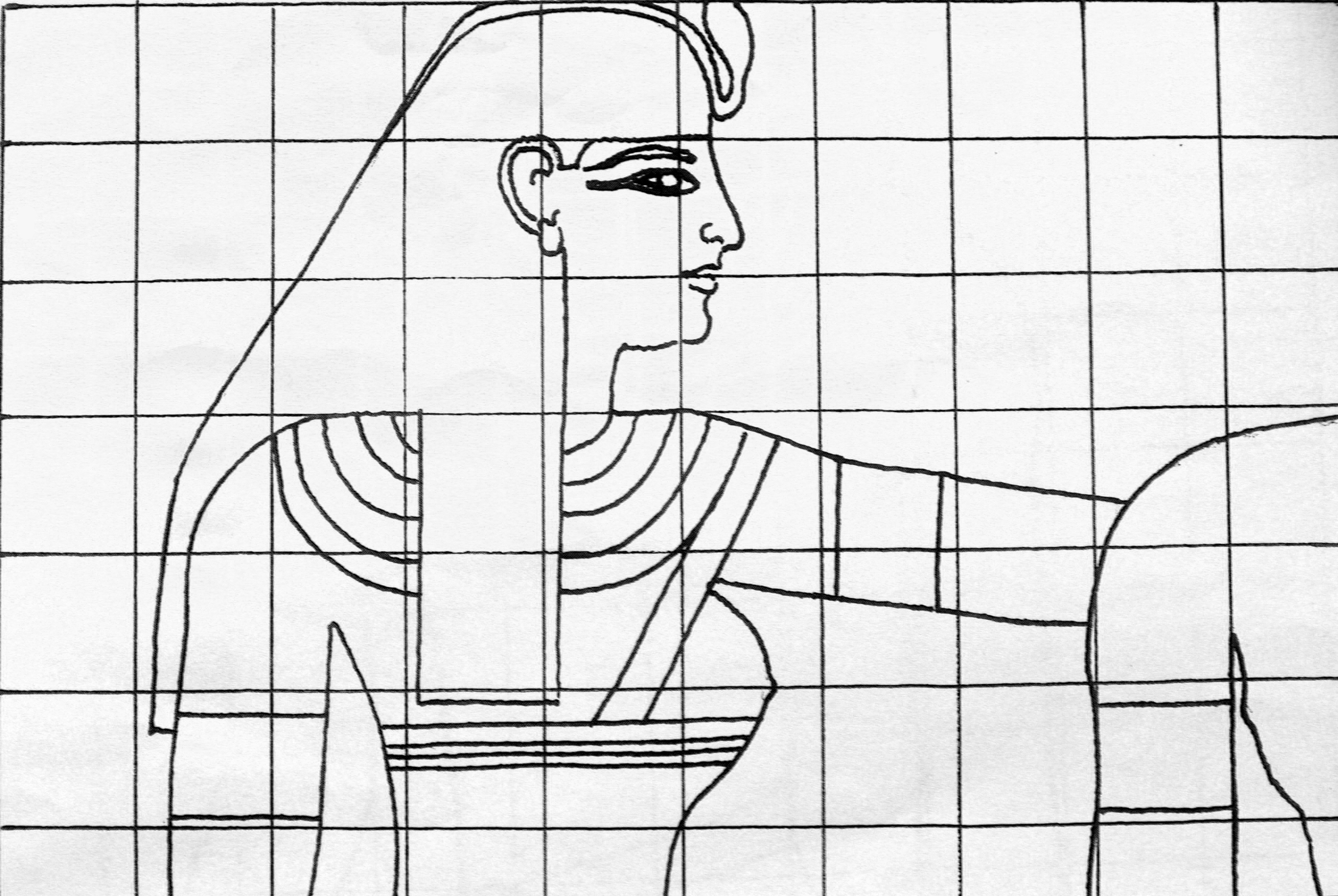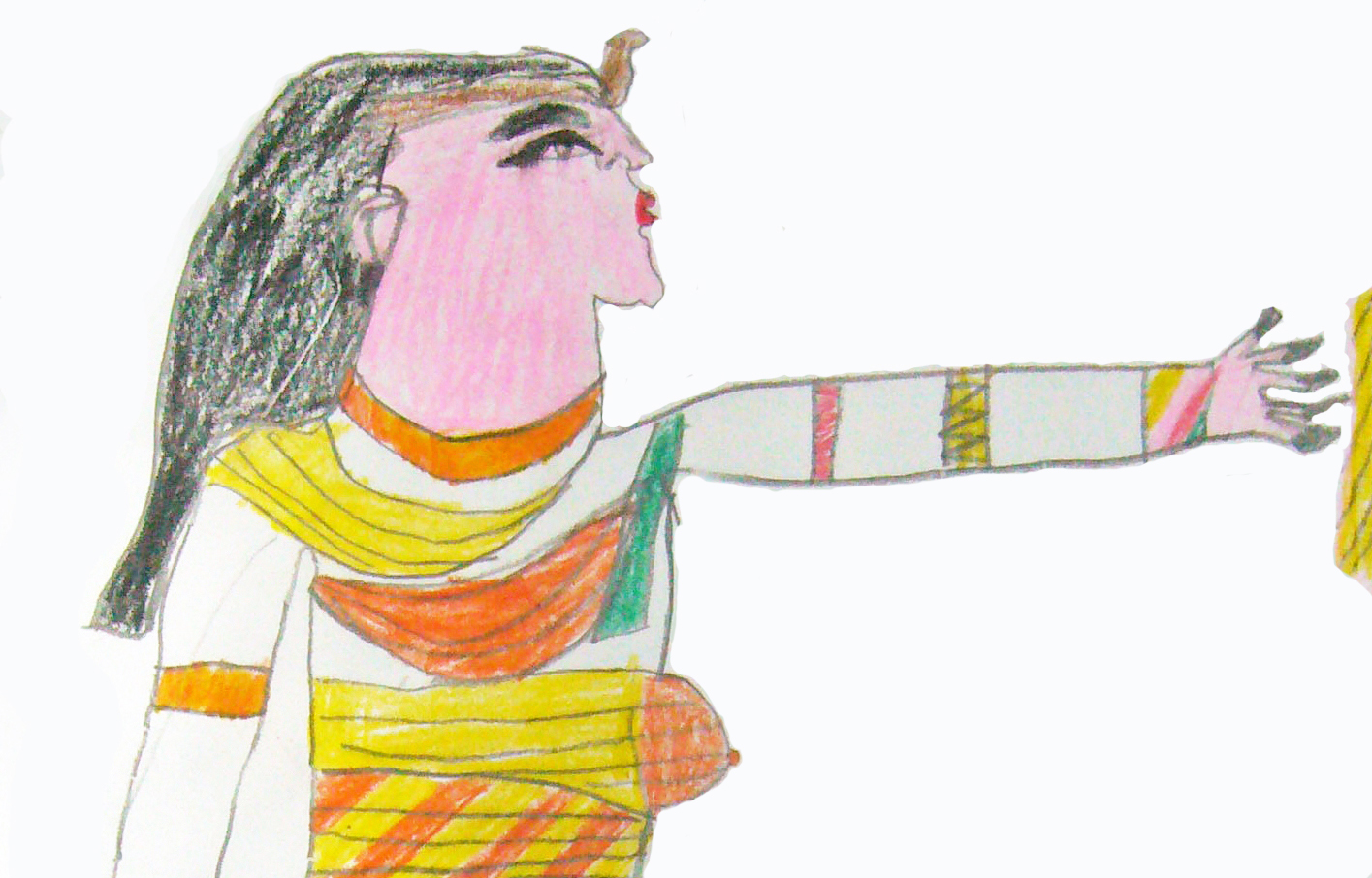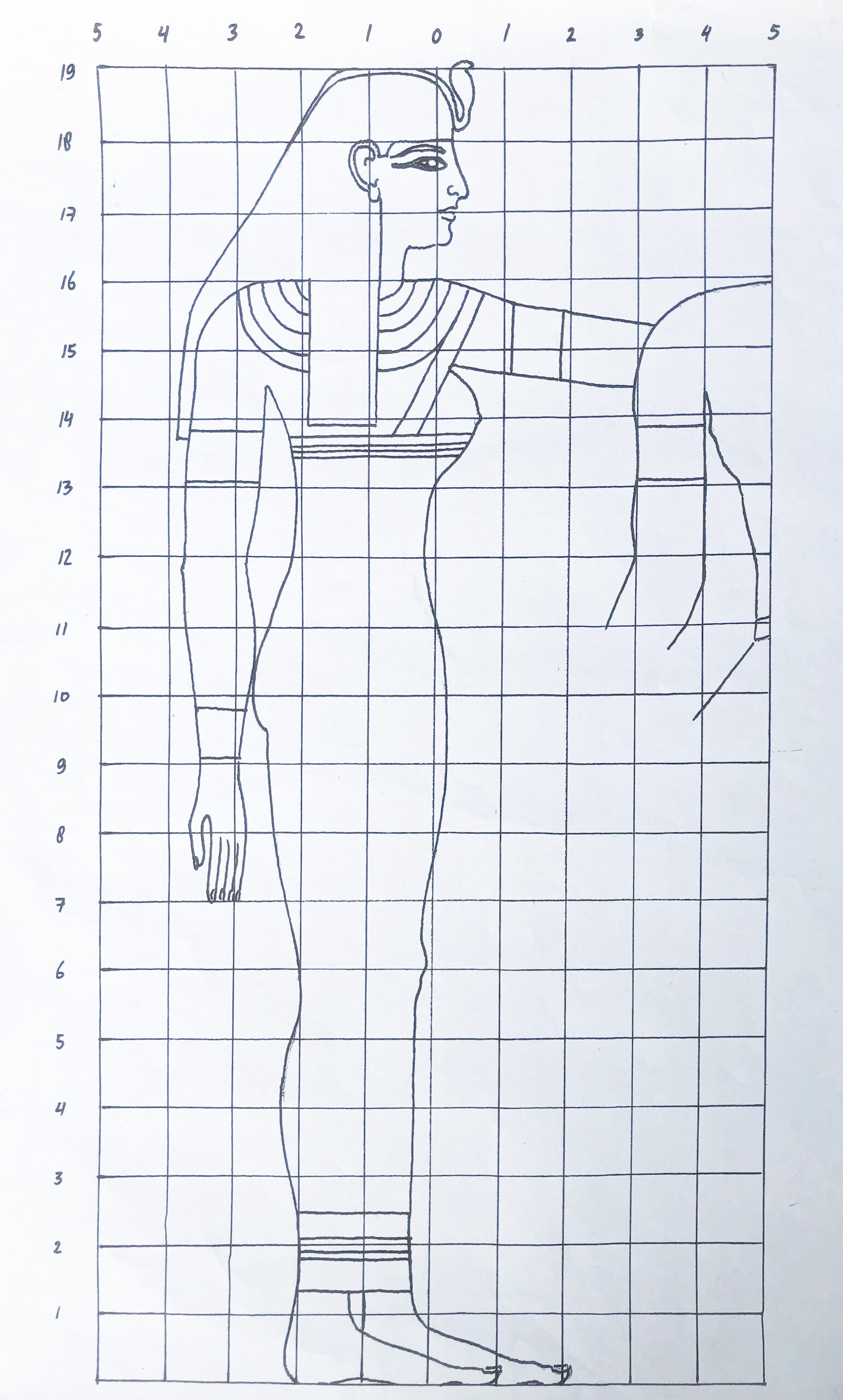Chapter 4 | AN EGYPTIAN PHARAO
In closing this lesson on the human figure, I will show you something strange, namely the way Egyptian pharaohs were drawn thousands of years ago. Take a good look at the figure and try to stand for some time into that position yourself. Head to the side, upper body forward and the legs and feet from the sides in the same direction. I will fall over if I try!
Why did those great artists portray their pharaoh so strangely?

The answer has to do with the belief that all body parts had to be depicted as clearly as possible (and without perspective foreshortening), otherwise the pharaoh would not end up properly in the afterlife after his death. For example, the feet are drawn from the side and both arms are visible. Perhaps the artists used a grid of squares in the preparatory phase to ensure that all sizes and proportions were exactly right. In the image of the pharaoh and his wife, there are 19 square boxes from top to bottom and 10 from left to right. The foot measures more than three squares and the hand two. This kind of art was clearly not made to hang on the wall at home or to view in a museum, but to decorate the pharaoh’s tomb, sometimes deep underground or somewhere in the middle of a pyramid.


 The wife of the pharao
The wife of the pharaoEXTRA: draw a pharaoh and/or his wife in the typical pharaoh pose. If you like, you can use the 1 x 1 cm squares to measure everything accurately. If you want to make the drawing twice as large, you can make each square 2 x 2 cm. instead of 1 x 1 cm. (for enlarging images see also Handy drawing tips part 1, chapter 6, level 1). It is nice to draw and color this as large as possible. If you agree on the sizes together, you can display the pharaoh and his wife side by side.